The stage is set. The priorities are already being set. It’s time to let Oregon’s leaders know what kind of transportation system you want.
The first public hearing on a transportation funding package that will be proposed in the 2017 Oregon legislative session happens on Monday (6/13) in east Portland. The committee hosting the hearing is the Joint Interim Committee On Transportation Preservation and Modernization — a name that shows a few of the political cards already being played.
After its failed attempt to raise $343 million in the 2015 session, the State of Oregon will try once again to put together a package that will survive what is likely to be a robust public and political debate. These early months of the process are crucial because how the problems are framed today will dictate the solutions proposed tomorrow.
This is a game where winners and losers are often decided before the final whistle blows.
So far, Governor Kate Brown and other leaders are talking about the horrors of congestion more than any other problem. Monday’s meeting will coincide with a “congestion tour” and the press statement for the event mentions no other issue. ODOT has also created an infographic (below) that lays out the “state of congestion”:
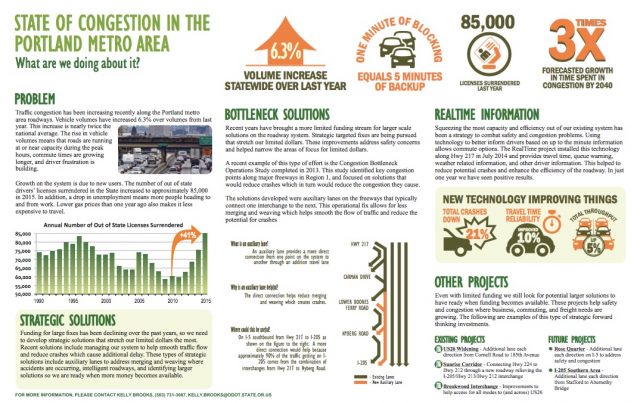
– PDF here –
If being stopped in traffic while we drive is considered the most pressing problem, how will we balance that with the many other important issues we face? Will the package help the people and places that need it most? Will it perpetuate existing problems or forge a different path?
We’ll be covering this as close as possible in the coming months, but here’s where things stand today.
Governor’s Vision Panel report sets the table
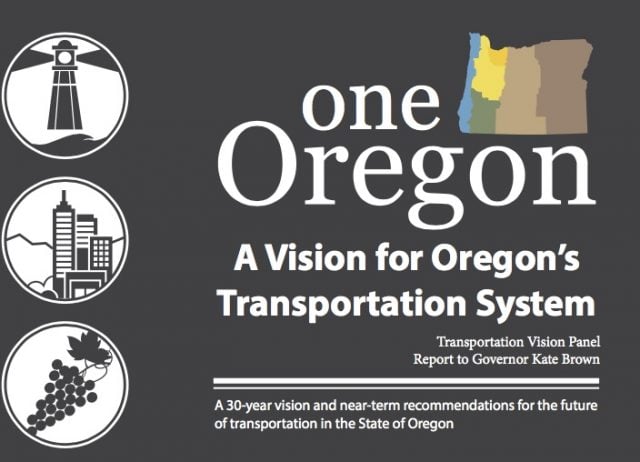
The starting point of the debate is the 47-page “Our Oregon” report from the Governor’s Transportation Vision Panel. Released on May 17th, it strikes some good chords (support for jurisictional transfers, transportation demand management, and bicycle tourism just to name a few), but there are reasons to worry that the legislature is poised for another highway-widening binge similar to the one they passed in 2009 (and whose final projects are just now wrapping up).
The last page of the report puts a dollar amount on the state’s priorities. While by no means an official proposal, this “snapshot” of the “sense of scale” that the state feels would be needed to “meet our transportation challenges” is revealing:

As you can see in the graphic, with an annual investment of $964 million the panel would spend: $324 million on maintenance and preservation, $257 million on seismic resiliency, $250 million on “bottlenecks” (a.k.a. highway widening), $108 million on transit, and last and least — $25 million on bicycling and walking.
For context, the panel wants to spend $25 million on each of the 10 highway bottlenecks they’ve identified and the just adopted Oregon Bicycle and Pedestrian Plan calls for an annual investment of $100 million.
To close that gap, the panel suggests three ways to pay for bicycling and walking infrastructure: a bicycle excise tax or an increase in set-asides for active transportation from the State highway and federal highway funds.
The panel wants the Legislature to consider a new tax on the sale of bicycles “to ensure that bicyclists are contributing to the infrastructure they use.” They see this tax as being much more feasible than a registration or licensing scheme because it would have lower administrative costs relative to potential revenue. The panel says a tax of 5-10 percent would create “substantial” revenue. They estimate a 1 percent tax on new bicycle purchases would generate $439,000 a year.
According to the panel, a bike excise tax could be a non-regressive tax because it could be structured to only apply to new bicycles over a certain value. Exactly what types of bikes and/or equipment would be exempt is still up for debate.
You can download the full Vision Panel report here.
Advertisement
Reform advocates are already organized and engaged
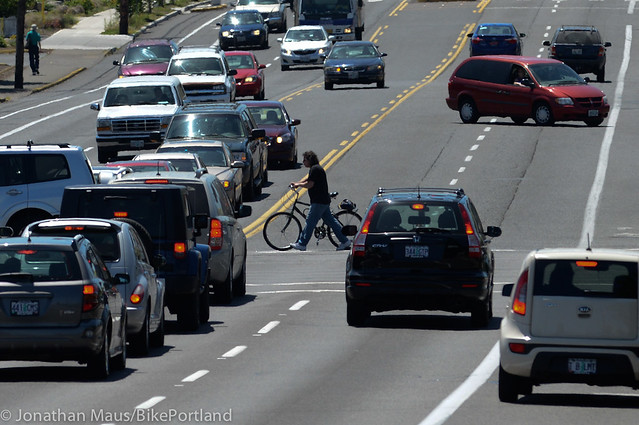
Because of the 2015 funding effort, transportation advocates are hitting the ground running this time around. A coalition convened by the Oregon Environmental Council — that includes the Bicycle Transportation Alliance, OPAL Environmental Justice Oregon, Transportation for America, and others — made formal comments on the Vision Panel report back in March.
Earlier this week the BTA laid out their demands. Advocacy Director Gerik Kransky said the package must:
be robustly multimodal, increasing transportation options across the state
benefit and not harm vulnerable communities
increase safety, reduce pollution, and improve health outcomes
be transparent on decisions about transportation investments.
As you can see with the term “multimodal” in the first bullet point, the 2017 funding debate will one of the first major tests of the organization’s new, non-bike-centric advocacy approach.
The BTA, through this aforementioned coalition, has already weighed in on the bicycle excise tax. In comments to the Governor’s Transportation Vision Panel project manager on March 3rd, they wrote:
“While a ‘bicycle excise tax’ is perhaps the least problematic bicycle user fee, given that administrative costs might be fairly low, it constitutes a new sales tax, which Oregonians have shown no willingness to support in the past. A new sales tax on bikes would also be regressive; adding even $40 to the cost of a serviceable daily commuter bike (which can cost around $400) is likely to reduce the number of people who switch to bike commuting. Remember that bike commuters reduce congestion and pollution.”
OPAL Environmental Justice Oregon is bringing their push for more transportation options and safe streets right to legislators on Monday. They’ll hold a press conference in the plaza outside the hearing an hour before it starts.
Can ODOT be trusted?
One thread of the upcoming debate will likely center on ODOT management. The fallout from ODOT Director Matt Garrett’s miscalculation (or lie, depending on your perspective) about greenhouse gas emissions targets that led to the demise of the 2015 funding package are still fresh. Some legislators called for Garrett’s resignation after that flub.
The case that ODOT’s governance must change before they’re trusted with new revenue was strengthened when former Metro president David Bragdon went on a speaking spree back in October that level serious criticisms at the agency.
Then on Tuesday another shoe dropped: The Portland Tribune reported that a high-ranking ODOT advisor on trucking has accepted a $35,000 a year job on the board of a company he’s supposed to regulate.
What’s next?
This debate is just starting, but the time for us to set the narrative is now. It’s clear the Governor and top legislators want to tilt the spending toward highway widening in the false hope that it will “eliminate bottlenecks.” They think bigger freeways will magically allow trucks and cars to speed across our state without delay.
Come on. We’re not that naive are we? This is Oregon. We should know better. The question is, will people who see a different path forward have enough time and enough influence to educate those who cling to the status quo?
We’ll find out starting on Monday. The hearing starts at 5:00 pm in the Great Hall Conference Room of the Mt. Tabor Building on the campus of Portland Community College Southeast (2305 SE 82nd).
— Jonathan Maus, (503) 706-8804 – jonathan@bikeportland.org
Our work is supported by subscribers. Please become one today.


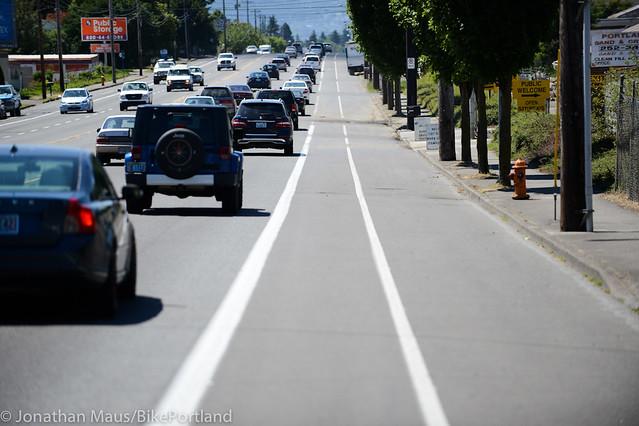
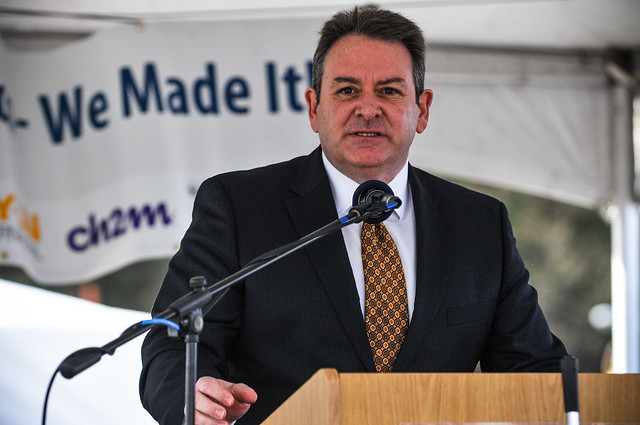
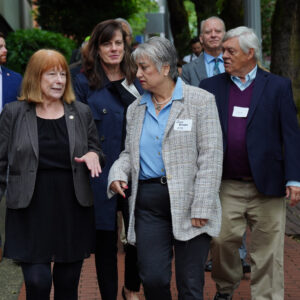
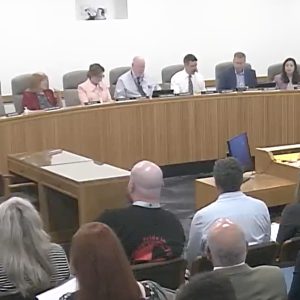
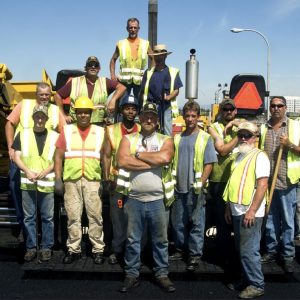

Thanks for reading.
BikePortland has served this community with independent community journalism since 2005. We rely on subscriptions from readers like you to survive. Your financial support is vital in keeping this valuable resource alive and well.
Please subscribe today to strengthen and expand our work.
100 % more money being given to wider highways? More trails and cycle tracks, not freeways!
Thank you for covering this important issue, Jonathan.
Some of the stories that we will be working to amplify on Monday’s hearing are included in this great, short video: https://www.youtube.com/watch?v=13hDaWLqsXs
These are some of the people we can help with a great transportation bill.
Sad situation, but that is a walk in a park compared to Raleigh Hills K-8 on SW Scholls Ferry Road.
I know it will not be popular, but I believe “congestion relief” is an acceptable part (part!) of the spending package.
During peak commute periods, I already see motorists blazing down residential streets in my neighborhood at 40 mph and easing through stop signs at 10 mph to avoid the congestion on nearby collectors and arterials. We may all think it’s a great idea for people to ride bikes and transit, but for lots of people they are not yet realistic options.
I’d be willing to let ODOT spend some money on widening I-5 and I-205 if it makes our residential and neighborhood commercial streets safer by keeping longer-distance, faster traffic in major corridors.
Let the flames begin.
J_R,
Nothing I say about concerns with the “congestion is a problem” framing means that I think everyone should just ride bikes and take transit. Not at all. I absolutely agree that congestion is a real thing and that it has negative impacts. I’m also not so naive to think that everyone is going to start biking and taking transit right away. But this is all about competition.
We must stop making driving single-occupancy cars a feasible option for urban and short trips. Widening urban freeways makes urban driving easier which means more people will do it.. And more importantly, it costs a looot of money… And that’s money that we need to spend improving the modes that are better in the urban context: transit, walking and biking.
Let’s have amazing highways that connect our state for recreation and commerce — But let’s be very careful and smart to do everything we can to make sure that within urban regions driving is the absolutely worst option and that the fastest/easiest/funnest/cheapest thing to do is to bike or take transit.
What about the I-5 northbound PM commute congestion?
Make the Vancouver drivers pay for the problems they are exporting onto Portland.
I don’t disagree, keep in mind most of us who live in WA and work in OR are paying income tax to OR. I have no problem with sending close to 9% of my income to Salem, how the politicians spend that money is out of my control. I encourage you to persuade them to think about long term solutions (and you are doing a bang up job) (kudos) to reducing the use of automobiles. My impact to the problem is very small since I frequently telework and ride my bike across the 205 bridge, most of the time. It’s a quick trip from where I live, to the airport where I work. One last thing, one world no boarders, the Vancouver commuters are just a small part of a much larger problem.
Who cares?
Should we have a candlelight vigil for all the drivers who died due to commuter congestion?
People living near the highways.
I live near 3 highways and don’t care if any of them are backed up or congested.
You would if you cared about what you breathe.
Do you have any evidence that a 2-lane highway, congested for 4 hours a day, is worse for the air than a fast-flowing 4-lane highway with 50% more traffic at all 24 hours?
Stop and go traffic emits a lot of pollution.
And if ODOT spends billions of our tax dollars to expand the freeways, they will emit more pollution in the future, because there will be more vehicles per hour occupying the space. Do you really think that freeway expansion will improve your neighborhood’s livability?
No, I do not.
Toll the bridge, reduce congestion.
The toll would reduce commuters as then the Vancouver residents would then have to work on the same side of the river as their jobs.
It has never made sense to me that roads are designed for the rush hour numbers. Where is a “problem” for roughly 25 -30 hours of the 168 hours (15-18%) of the week (not including holidays which means facilities planned for high congestion are designed for only roughly 10% of the hours for the year). Which leads to designs which make the roads and highways less safe (wider, more lanes, higher speed limits) for the other 138 hours of the week.
So with that in mind how about only 10% of the transportation budget goes to lessening congestion. Which would give it 9.6 million, and split the remainder and give 120 million to public transport and another 120 million to bicycle and pedestrian improvements. And that 9.6 should go towards “influencing” Vancouver to accept light rail over the Columbia both at the I-5 and 205.
Congestion is a first world problem – screw it. And if they don’t like it, find another way. Besides the more congestion we get the more people walk, bike, and take transit.
I would add that ODOT’s focus for ‘bottlenecks’ will not likely be state surface roads through Portland, but freeway chokepoints.
Which is fine, or good even, as J_R reasoned, but how do you stop induced demand?
If we get rid of the choke point on I5 N or through the Vista Tunnel (admittedly each terrible) how do we stop people from living even farther out in Battleground/Hillsboro with their 10 minutes saved?
Yes. This is the root cause of induced demand and sprawl. It’s disappointing that ODOT and Gov. Brown still do not understand this.
“I know it will not be popular, but I believe “congestion relief” is an acceptable part (part!) of the spending package.”
Agreed. Also, it’s the only way to gain political support from legislators and voters who don’t give two hoots about bicycles.
I don’t want a plan to have support from legislators if it’s a bad plan. Widening highways just so we get more bike lanes is not a plan I am willing to support, just for the sake of getting everyone on board. The primary reason is that highway widening doesn’t actually solve the problem of congestion in the first place.
OK, fair enough. Those are your views.
From the American Economic Review dec 2011.
“For interstate highways in metropolitan areas we find that VKT [vehicle kilometers traveled] increases one for one with interstate highways, confirming the “fundamental law of highway congestion” suggested by Anthony Downs (1962; 1992). We also uncover suggestive evidence that this law may extend beyond interstate highways to a broad class of major urban roads, a “fundamental law of road congestion”. These results suggest that increased provision of interstate highways and major urban roads is unlikely to relieve congestion of these roads”
SInce 1962 it has been known that adding lanes doesn’t relieve congestion. And you might eliminate one choke point, only to have another pop-up near by. So it’s basically an eternal game choke point wack a mole, and each time you do it, you increase congestion since it always warrants new lanes.
Realistic or easy? I think for “lots” of people an alternate form of transport is a very realistic option, but it takes effort and some selflessness and well… yeah, I’m not holding my breath.
Especially for commutes… You go to the same place, at the same time, on the same days of the week (generally) and you can’t possible plan something else?
Driving should be a luxury that is used for longer / infrequent / leisure / entertainment related trips, not every day tasks. Since riding my bike full time my wife and I have been very conscientious about our driving and will plan our weekend days around differing schedules to ensure we are taking as few car trips as possible. It requires some planning and for sure a bit of a loss in flexibilty but I love the slower pace it brings ot our lives when we as a family only take maybe one car trip in an entire weekend (we live in Beaverton, obviously not that remarkable for someone in town). Spending 6 days of your week only traveling by bike or foot really impacts your appreciation for getting somewhere just sitting down. I’m starting to see car trips as indulgences and something to be used sparingly.
Oops…
@J_R
Bicycle excise tax question. What’s the proposed tax rate? The article suggests a one percent tax. The BTA’s statement cited in the article calculates $40 on a $400 bicycle. Either one is wrong or both are wrong.
the implication is for high end bikes only, so maybe $40 on a $4,000 bike?
Tax what you want less of. It would be ironic to have a sales tax on bikes, but not on cars or trucks or SUVs.
The flyer mentions an excise tax on motor vehicles as an option to raise revenue as well.
Great first photo Jonathan.
Imagine that bike lane with a traffic separator, or raised median, and that parking lane marked for bikes.
Maybe even pro-time parking in that right travel lane for the remaining residential, as needed.
the truck is curious though.
Pro-time parking (or even travel lanes) that double as a bus lane during peak hours could be implemented tomorrow for very little cost. Why PBOT is so timid about bus lanes on major streets such as Hawthorne, Burnside, etc. is beyond me. This is a very quick and simple solution to improving our bus system overnight.
Every outer-east Portland arterial with parking should have the parking converted into a bike/bus lane. The utilization of the existing parking is absurdly low on most streets, and busses often get stuck in traffic. This would be a quick and cheap improvement for biking and transit with minimal impact to residents.
I don’t see how a bike bus lane would be safe for cyclists.
Agreed, bus/bike lanes are bad design. However, most East Portland arterials have room for both bus lanes and protected bike lanes.
Then why had PBOT striped them in several parts of the city? Vancouver at Broadway/Weidler, for example…
Back before annexation (before 1992), the county banned parking along most arterial roadways in East Portland, so most development had plenty of off-street parking, hence the low parking-utilization rate. Most of the bike lanes were also implemented by the county, but roads like Division and 122nd had three traffic lanes in each direction, which Portland reduced to two, expecting the area to rapidly redevelop towards storefront-type commercial, as is common in inner Portland. In the last 25 years, hardly any redevelopment has occurred.
$250 million for useless highway widening, yet transit only gets $100 million which is an actual solution to congestion? Someone needs a lesson in induced demand. I’m anticipating a CRC-level of opposition to this, so should be interesting (read: infuriating). I say: drop the $250 entirely as it won’t actually fix anything, and dedicate it instead to building bus lanes. Or use it to implement congestion charging and traffic demand management solutions. Make drivers pay for the congestion they are causing.
$25 million for “bike and walk” sounds promising, but what’s the split Without a standard design for bike infra, I’m afraid we’ll just get more painted lanes. Protected bike lanes need to be the standard on busy roads, and diverters need to be the standard on lower-volume ones. We expect half-assed bike projects now because of lack of funding, but there’s no excuse for this when we actually have the money to do it right.
Honestly, a sales tax on new bikes might not be a terrible idea. It will shut the people up that claim that “bikers don’t pay their way”, provide real dollars for infra, and do away with any mess that a registration program would create. 1% really isn’t that much. Other cities haver the benefit of a sales tax, and the lack of such a tax here puts us at a disadvantage.
In this case, however, I oppose the proposed bike tax because the only reason it is suggested here is to open up more funds for highway widening. In an ideal world, we’d be excising additional “sin taxes” on drivers and using that money to pay for bike infra, as we actually save the state money by biking instead of walking. They should be paying us.
The bicycle tax would only increase congestion on the 1-5 and 205 as people drive up to Washington to buy their bicycles (remember as an OR resident you need not pay the sales tax in much of WA too).
The smart people at BTA should be able to pick apart the congestion info-graphic.
One glaring problem is the timeframe for traffic growth.
Imagine, 6.3% increase from a year ago, when coming out of a recession!!!
Then there is the historical problems with even forecasting growth.
http://seattletransitblog.com/2014/01/22/traffic-forecast-v-reality/
They’re using a one-year sample size as their basis for needing highway expansion! Talk about cherry-picking…
Models are great at reinforcing the biases used to select the inputs. This affects many fields, but is particularly notable in the case of traffic models. The 7 Corners intersection got a lower quality design, in my opinion, because the PBOT staffer doing the modeling was very aggressive in his growth forecasts, and way overshot the mark predicting future traffic counts.
Also, why is no one talking about commuter rail between Vancouver and Portland Union Station? All the infrastructure already exists: the trackage, bridge, station platforms, etc. Amtrak already operates on this right-of-way, so why can’t we add a few commuter trains in the mornings and evenings as a partnership between C-Tran and TriMet? They’d have to work around the BNSF schedules, but nearly every commuter rail in the US has this problem and has managed to come up with a solution. The line could even extend to Oregon City as well. Will all the upcoming development around the Vancouver and OC Amtrak stations, this seems like a no-brainer to me, and an easy and relatively cheap fix compared to chasing congestion issues with highway widening.
The problem is that the tracks on the Washington side don’t go near any dense areas. You have the BNSF mainline that skirts the west side of Vancouver and bypasses all of the main residential and commercial centers, or you have the line that runs along the Columbia, adjacent to low-density housing on one side, and the river on the other. If there were major population centers around the tracks, it would make sense.
An extension of the yellow line into downtown Vancouver, and connecting to the BRT project CTRAN is working on would be the best transit improvement between the two states. They would need at least $500 million to make that happen, though.
The Vancouver Amtrak station isn’t in a dense location yet. The area nearby the station along the river is being developed into a mixed use development and park. Additionally, the existing station is right next to downtown and a 15 minute walk from Esther Short Park. Some sidewalk improvements, could better connect the station to the more walkable area of downtown. At the very least, Vancouver commuters could drive to the station and take the train the rest of the way, keeping the motor traffic entirely in Washington and off the Interstate Bridges and I-205 Bridge.
There are obvious challenges here, but I do think it’s worth looking at and formulating a plan.
park and ride lot on the other side of the river?
Commuter rail between Vancouver and Portland HAS been extensively studied for twenty years. It’s NOT as simple as you think.
The Commuter Rail Feasibility Study completed in 1999 concluded “By 2013, however, any level of commuter rail service would require a dedicated passenger track to accommodate the commuter service and the expected increases in freight and intercity passenger trains. The findings of this feasibility study indicate that a commuter rail system should not be
pursued unless it is determined that a major rail investment necessary to support future intercity passenger and freight rail growth in the corridor is to be made. This rail corridor is severely constrained in terms of how much growth it can support without major capital investment.”
Additional study conducted in 2002 concluded “Findings included that commuter rail service cannot operate effectively on the freight rail network over the next 10 to 20 years, even with the identified incremental and additional network improvements commuter rail service could be instituted only on a separated passenger rail-only network. A separate passenger rail-only high speed rail system would improve intercity passenger rail service and could drive the feasibility of commuter rail. The cost of separated passenger network could be of the order of magnitude of $1.5 to $1.7 billion.”
You can find more on the SW Washington Regional Transportation Council’s website.
So much for “no-brainer” solutions and “cheap fixes.”
Chicago is one of the busiest rail hubs in the country and it manages to handle freight and commuter rail. Ask them how they do it.
First, they’re the third largest metro area in the US…we’re 24th. So, more demand and ridership. Second, they have a much more extensive rail network than we do. Nothing else like it other than the Northeast Corridor. There’s probably more reasons than that if I cared to continue making the point…
I provided quotes from actual studies identifying problems with commuter rail from Vancouver to Portland and a reference to the agency that is responsible for transportation planning in SW Washington. You are the one who claims it would be easy to implement commuter rail. Why don’t YOU provide information and statistics from Chicago and elsewhere to back up your claim rather than suggesting that I check with Chicago to see how they did it?
Union Pacific operates Metra. It is the last remaining passenger rail service provided by a freight carrier in the U.S. So, as soon as BNSF ponies up $1.5 billion to build the necessary infrastructure for a viable commuter rail on the trackage they own, you can start comparing it to Chicago.
With more tracks. We have a very slow bridge with two tracks over the Columbia and the Willamette, and it is the mainline for all north/south west coast freight trains. If we had 3 or 4 tracks between Portland and Vancouver, we would have capacity for commuter rail. Right now we don’t.
And, really, it would be a waste of money. WES and Sounder have operating costs of around $16 per passenger per trip. So you spend millions to build the tracks, millions to build park and rides in Washington, millions to buy the trains, and then you end up with a service that is 8x more expensive to operate than MAX.
Look at a map from Metra, LIRR, MNR, NJT, or SEPTA. They don’t run shuttles connecting the edge of one downtown with an industrial area near a much smaller one. They run trains that make several stops in long established little towns/suburbs that grew up around the stations. Ridership on a Vancouver-Portland shuttle would be abysmal, and a huge waste of money. If you want to improve transit run buses and light rail to where people are, giving them dedicated lanes/queue jumps etc…as feasible. Don’t waste money on a heavy rail shuttle to an industrial area in Vancouver.
Things that appear to be absent:
1. carpool/transit lanes
2. increased parking fees (may not be a state issue)
3. Studded tire fee areas -require an expensive sticker to use studded tires within city limits
4. Tolls (this may be federal?)
Even car-crazy CALTrans has formally accepted induced demand and is now opposed to adding travel lanes in any further foolish attempts to out-build congestion. They have finally realized that the more lanes they build the worse congestion gets, a now well-documented bit of science. When oh when will Oregon and ODOT catch up?
On the silly bike excise tax: I get awfully tired of hearing how people on bikes don’t pay their own way. We do zero roadway damage. Nationwide, so-called user fees (gas taxes, tolls, registrations) paid by motorists pay for about 40% of roadway construction and maintenance and none of the necessary policing and other emergency response; Oregon can’t be much different and propaganda from ODOT to the contrary lacks any credibility. If we equally pay our 60% and do zero percent of the damage, the motorists are getting quite the subsidy from cyclists. Perhaps we should have an excise tax on motor vehicles and ramp it up with weight, or better yet a real increase in the gas tax that levels the p(l)aying field a bit.
http://www.uspirg.org/sites/pirg/files/reports/Who Pays for Roads vUS.pdf
Three more thoughts:
(i) we should talk about the overall costs / benefits to society of driving or biking, not just in terms of infrastructure costs. If we did that it would follow that we should pay people to bike or walk because of its net benefit to society. Instead, we pay people to drive. Conversely, building more roads is actually more costly for Oregon because of indirect costs such as higher health care costs.
(ii) At least some of the costs of driving are not paid by current taxpayers because our national debt is increasing. These costs are therefore paid by our children (who will be delighted to hear that we spend their money on a mode of transportation that also will increase the damage of climate change).
(iiI) I am wondering how much the state receives from the federal government for these highway projects. Would be nice to know the full infrastructure costs of building these roads, not just the costs to Oregon.
Actually on a nation wide basis gas taxes, license fees, registration fees, weight fees and tolls cover 50% of the cost of building and maintaining roads. In Oregon this number is 55% and Oregon is ranked 15th in terms of how much of the road costs are covered by gas taxes,license/registration fees tolls etc. You can get a state by state breakdown here http://taxfoundation.org/article/gasoline-taxes-and-user-fees-pay-only-half-state-local-road-spending